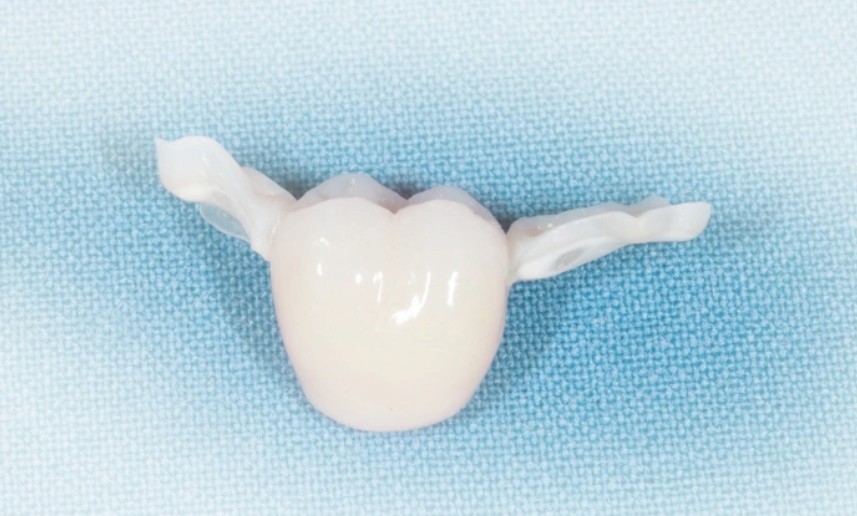Maintaining a bright smile is more than just brushing and flossing. For those who have opted for a Maryland bridge, understanding how to care for it is essential for longevity and comfort. This dental solution not only fills gaps but also restores functionality to your bite. If you’re new to the world of dental bridges or simply want tips on upkeep, you’re in the right place! Let’s explore what makes the Maryland bridge unique and discover some straightforward ways to keep it in top shape. Your journey toward a lasting smile starts here!
Caring for Your Maryland Bridge: Tips for Longevity and Maintenance
To keep your Maryland bridge in excellent condition, practice good oral hygiene. Brush twice daily and floss around the bridge carefully to prevent plaque buildup. Consider using an antibacterial mouthwash for added protection against gum disease.
Regular dental check-ups are crucial for monitoring the health of your bridge and surrounding teeth. Your dentist can spot potential issues early on, ensuring that your Maryland bridge remains functional and comfortable for years to come. Prioritize these simple habits to maintain a healthy smile!
The Origin of the Maryland Bridge
The Maryland bridge has its roots in the early 1970s, developed by Dr. Edward R. Anusavice at the University of Maryland School of Dentistry. This innovative dental solution aimed to provide patients with a less invasive way to replace missing teeth while preserving adjacent tooth structure.
It quickly gained popularity due to its effective design and straightforward application process. The Maryland bridge features a metal framework that bonds to neighboring teeth, offering stability without extensive alteration, making it an appealing choice for many patients facing tooth loss.
Dental Bridges Overview
Dental bridges are a popular solution for replacing missing teeth. They consist of artificial teeth, known as pontics, anchored in place by surrounding natural teeth or dental implants. This restoration helps restore functionality and enhance the smile.
Bridges come in various types, each designed to meet specific needs. The most common materials include porcelain, metal, or a combination of both. Each option offers durability and aesthetic appeal while ensuring that you can chew effectively and speak clearly—making them an essential choice for many patients.
What is a Maryland Bridge?
A Maryland bridge is a type of dental prosthesis used to replace missing teeth. It consists of a false tooth, or pontic, which is anchored by two metal wings that bond to the adjacent teeth. This design offers a less invasive alternative compared to traditional bridges.
What sets the Maryland bridge apart is its minimal impact on surrounding teeth. The wings are usually bonded directly to the enamel, preserving more of your natural tooth structure while providing stability and support for chewing and speaking.
Procedure Details
The procedure for getting a Maryland bridge typically begins with a consultation. Your dentist will assess your oral health and take impressions of your teeth. This step ensures that the bridge fits perfectly in your mouth.
Next, they’ll prepare the adjacent teeth by lightly shaving them down to create space for the bridge’s wings. After this, temporary bridges may be placed while your custom Maryland bridge is crafted in a dental lab. The final fitting usually takes place within a couple of weeks, ensuring comfort and stability before completion.
Pros and Cons of a Dental Bridge
Dental bridges offer several advantages. They restore the function of missing teeth, allowing for easier chewing and speaking. A Maryland bridge is less invasive than implants, requiring minimal alteration to adjacent teeth. This makes the procedure quicker with a shorter recovery time.
However, there are some drawbacks to consider. Bridges may not last as long as dental implants and can require replacement after several years. Additionally, they can lead to bone loss in the jaw over time if not properly cared for or maintained.
Recovery and Outlook
After receiving a Maryland bridge, patients can expect some mild discomfort. This is typically manageable with over-the-counter pain relievers. Swelling or sensitivity may also occur but usually subsides within a few days.
Most individuals return to their normal routines shortly after the procedure. Regular follow-ups with your dentist will help ensure everything is healing correctly and functioning well. With proper care, you can enjoy the benefits of a Maryland bridge for many years without significant issues arising.
How to Care for Your Dental Bridge
Proper care for your dental bridge is crucial for its longevity. Start with regular brushing and flossing, just as you would with natural teeth. Use a soft-bristled toothbrush and fluoride toothpaste to avoid damaging the materials.
In addition to daily oral hygiene, consider using an interdental brush or water flosser to clean around the bridge effectively. Routine dental check-ups are essential too; your dentist can monitor the condition of your bridge and ensure it remains in good shape over time.
How Long Does a Dental Bridge Last?
The lifespan of a dental bridge, including a Maryland bridge, typically ranges from 5 to 15 years. Factors such as oral hygiene habits, diet, and regular dental visits can significantly influence its durability.
With proper care, some bridges may even last longer than expected. It’s essential to maintain good brushing and flossing routines while visiting your dentist for check-ups to ensure your bridge remains in top shape throughout its life.
Dental Bridge vs. Implant: Which is Better?
When considering tooth replacement options, both dental bridges and implants have their unique advantages. Dental bridges are less invasive, often requiring only a few visits to complete the procedure. They can effectively restore your smile quickly and don’t require surgery.
On the other hand, implants offer a more permanent solution by integrating with the jawbone, providing stability similar to natural teeth. While they may involve a longer treatment process and higher costs upfront, many patients find their durability worth it in the long run.
When to Call Your Dentist
If you notice any discomfort or pain around your Maryland bridge, it’s time to reach out to your dentist. Ignoring these symptoms can lead to more serious issues that could compromise the longevity of your dental work.
Additionally, if you experience changes in how your bridge fits or if it feels loose, don’t hesitate to schedule an appointment. Early intervention is key in preventing further complications and ensuring the best possible outcome for your oral health.
Common Questions about Dental Bridges
Many people have questions about dental bridges, especially regarding their care and longevity. A common concern is whether a dental bridge can be removed and recemented if necessary. Yes, this procedure is possible under certain conditions, but it’s essential to consult with your dentist.
Another frequent inquiry revolves around the comfort of a dental bridge compared to natural teeth. Most patients find that modern bridges feel quite similar to real teeth after an adjustment period. However, individual experiences may vary based on personal sensitivity and adaptation time.
When should I call my dentist?
If you experience pain or discomfort around your Maryland bridge, it’s time to call your dentist. Sensitivity to hot or cold foods can indicate underlying issues that need attention.
Additionally, if you notice any changes in the fit of the bridge or if it feels loose, don’t hesitate to reach out. Early intervention can prevent further complications and ensure your dental health remains intact. Regular check-ups are also essential for maintaining its longevity and overall function.
What’s the ideal age for a dental bridge?
There isn’t a specific ideal age for getting a dental bridge. Instead, it depends on individual circumstances such as oral health and the presence of missing teeth. Adults in their late twenties to early thirties can benefit from bridges if they have experienced tooth loss due to injury or decay.
However, many older adults also opt for this solution as they face more wear and tear on their teeth over time. It’s important to consult with your dentist to determine the right timing for your situation.
How many teeth can be on a bridge?
A dental bridge can typically replace one or more missing teeth. In the case of a Maryland bridge, it usually supports two to three teeth at most. This design is ideal for gaps where adjacent healthy teeth are present.
However, the exact number depends on your specific situation and oral health needs. Your dentist will evaluate factors like tooth structure and gum condition before determining how many artificial teeth can be supported effectively by your bridge.
How long can you wait to get a dental bridge?
Delaying the placement of a dental bridge can have consequences. If you wait too long after losing a tooth, adjacent teeth may shift into the gap. This can lead to misalignment and further complications.
Ideally, it’s best to seek treatment within a few months of tooth loss. However, if more time has passed, consult your dentist about your specific situation. They’ll help determine the right timeline based on your oral health needs and options available for restoring your smile effectively.
Is a dental bridge painful?
Many people worry about the pain associated with dental procedures, including bridges. However, getting a dental bridge typically involves minimal discomfort. Your dentist will use anesthesia to ensure you don’t feel any pain during the procedure.
Afterward, some sensitivity might occur as your mouth adjusts to the new bridge. Any mild discomfort can usually be managed with over-the-counter pain relievers. It’s essential to communicate with your dentist if you experience significant pain or prolonged discomfort after getting your Maryland bridge.
Do bridges feel like real teeth?
Many people wonder if a dental bridge feels like natural teeth. The answer can vary depending on individual experiences and the quality of the bridge itself. A well-fitted Maryland bridge is designed to mimic the appearance and function of your real teeth, allowing for normal speech and chewing.
However, some patients might notice a slight difference in sensation or comfort initially. With time, most users adapt to their bridges, often forgetting they even have them as they blend seamlessly into everyday life.
Can a dental bridge be removed and recemented?
A dental bridge can sometimes be removed and recemented, depending on its condition and the type of material used. If the bridge is still intact and hasn’t faced significant wear or damage, a dentist may be able to safely detach it for adjustments.
However, this procedure isn’t always straightforward. Factors like gum health, underlying tooth structure, and age of the bridge play crucial roles in determining whether re-cementing is viable. Always consult your dentist for personalized advice tailored to your situation.
Conclusion
Caring for your Maryland bridge is essential for maintaining oral health and ensuring longevity. Regular dental check-ups, proper hygiene, and mindful daily care can significantly enhance the lifespan of your dental restoration.
Investing time in understanding how to protect your bridge pays off in comfort and confidence. By staying informed about maintenance practices, you can enjoy a seamless smile that lasts for years while feeling empowered in your dental journey.
Read More Articles On our Site!







